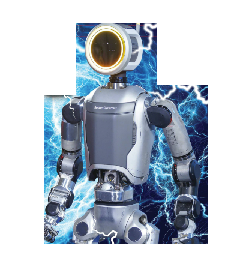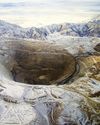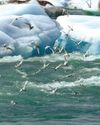MAX POWER

It keeps the lights on, charges your phone, powers your favourite console games, cooks your food and is now helping to create the next generation of high-tech robots. Come on a supercharged journey to get to know electricity's secrets and discover some of the surprising electrical wonders to be found in nature.
What is electricity?
Electricity is what happens when electrons (tiny, negatively charged particles found in all atoms) move about. The simplest way to experience this is to rub a balloon on your hair. When you pull it slowly away from your head, your hair "magically" sticks to the balloon.
This, of course, isn't magic but a type of electricity called static electricity. Rubbing the balloon moves electrons from your hair onto the outside of the balloon. This action gives the balloon a negative charge and your hair a positive charge, causing them to be attracted to each other. The electrons can also "jump" to another surface, creating an electric spark. The electricity that powers your home is called dynamic electricity because it is a continuous flow of electrons, also called a current. Metals like copper, which electrical wires are made out of, have lots of electrons that can freely move between the copper atoms. When you plug your TV into the wall, the electrons get pushed around the wire, creating the current that powers your TV.
Naturally sparky
You can find electricity right in the core of the planet. As Earth rotates, the liquid metal in its core moves, creating flows of electricity. This generates a giant magnetic forcefield around the planet, protecting us from dangerous solar energy from the Sun. You can sometimes see this solar energy being deflected as the amazingly colourful aurora borealis (the northern lights).
هذه القصة مأخوذة من طبعة January 2025 من The Week Junior Science+Nature UK.
ابدأ النسخة التجريبية المجانية من Magzter GOLD لمدة 7 أيام للوصول إلى آلاف القصص المتميزة المنسقة وأكثر من 9,500 مجلة وصحيفة.
بالفعل مشترك ? تسجيل الدخول
هذه القصة مأخوذة من طبعة January 2025 من The Week Junior Science+Nature UK.
ابدأ النسخة التجريبية المجانية من Magzter GOLD لمدة 7 أيام للوصول إلى آلاف القصص المتميزة المنسقة وأكثر من 9,500 مجلة وصحيفة.
بالفعل مشترك? تسجيل الدخول

SECRETS OF THE SEAS
Take a deep dive beneath the waves as Melissa Hobson reveals the incredible animals that live in our seas.

Controlling the weather
Is technology being used to change the weather, or is it science fiction?

NEXT STOP: THE FUTURE
All aboard as JD Savage takes the fast track through 200 years of train travel.

The race is on between robots and humans
Twenty-one robots competed against human runners in the Yizhuang half-marathon in Beijing, China in April.

Growing baby corals
Meet the UK scientists giving breeding corals a helping hand.

Could you dig all the way through the planet?
Learn the science behind digging a giant hole.

Fabien Cousteau
Meet the ocean explorer who plans to build a futuristic base under the sea.

Gladiators fought big cats for entertainment
Scientists have found the first physical evidence in Europe that Roman gladiators fought lions.

HEADSCRATCHERS
Hi, I'm Pete, and I love science and the natural world. I work with the Royal Institution (Ri) in London, where you can find exciting, hands-on science events for young people.

Life on another planet?
Scientists have found molecules (groups of atoms) that could point to life on another planet.
